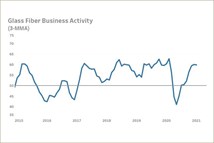Advancing the Supply Chain with Additive Manufacturing
Additive manufacturing can mean on-demand part creation, which can have a significant effect on the supply chain.
Additive manufacturing is proving its potential. Registration at this year’s Additive Manufacturing Users Group (AMUG) meeting at the Chicago Hilton (where you have to be a user of an industrial 3D printer to attend) was cut off at 1,600 before the event opened, or else it would have exceeded capacity.
While there remains so much in additive manufacturing (AM) for automotive production people to continue exploring—from printers, printing processes, materials and design strategies—one of the biggest thought-teasers is how AM can further optimize the supply chain. Imagine the savings in inventory, warehousing and delivery times using AM for on-demand spare parts for production line equipment or for vehicles themselves.
While AM production volume remains a top priority, the dream of a revamped supply chain is getting real-world investment from global players, and surprisingly, non-3D equipment or materials companies.
Software giant SAP America, Inc. (sap.com) and United Parcel Service (UPS; ups.com) are collaborating across their respective solution portfolios to enable critical components of an on-demand manufacturing network. It starts with SAP digitizing and optimizing the production part-approval process (PPAP) and handing the data directly to 3D printers at UPS stores throughout the country. By accelerating and standardizing the process, both companies believe a significantly greater number of industrial 3D print-ready production parts can be approved and ordered through UPS On-Demand Manufacturing with full integration into SAP manufacturing and procurement.
This brings a lot more than just getting parts faster. Automatic quantification of the financial viability of 3D printing vs. traditional procurement or manufacturing options on a host of real-time manufacturing and batch-specific parameters (such as tax calculations, shipping costs, bill of materials, etc.) will enable real-time decisions on the right supply chain path for every parts order.
A plant or production department will not have to research, procure or maintain any AM equipment at all, if it doesn’t want to. UPS “end-of-runway manufacturing” can get parts printed and shipped while providing customers tracking right from their SAP software system.
“Technology innovations such as 3D printing are revolutionizing traditional manufacturing and redefining our notion of the industrial supply chain,” said Bernd Leukert, member of the Executive Board, Products & Innovations, SAP SE at the SAPPHIRE NOW conference. “By bringing together the on-demand manufacturing and logistics expertise of UPS and the extended supply chain leadership of SAP, we can enable direct digital manufacturing and an on-demand industrial manufacturing network.”
AM ties it all together. In a recent white paper, “The Rise of Smart Operations: Reaching New Levels of Operational Excellence,” UPS describes how it conducted research to gauge the pace at which manufacturers are evolving. The results indicate a widening gap between companies aggressively embracing smart operations principles and those that are falling further behind. Those companies taking the lead are much better positioned to achieve the level of operational excellence needed to be competitively effective in today’s demanding markets, UPS says.
Not surprisingly, the research also revealed another prominent success factor—the increasingly important role of external service providers. Manufacturing companies must recognize they need to focus on their key internal competencies while leveraging the scale, technology and skills of those providers that can deliver crucial support processes, such as distributed 3D printing.
Shaking Up the Snow Globe
Alan Amling, vice president of Marketing at United Parcel Services Global Logistics & Distribution, makes the point that manufacturing (and manufacturing’s customers) have followed the same rules of mass production for decades. “But there are numerous advantages that make additive manufacturing especially attractive,” Amling says, “like no minimum quantities, no upfront tooling costs, faster production times, and more cost-effective customizations.”
“The 3D market is expected to triple over the next three years,” he continues. “If you can imagine that just 5 percent of manufacturing moves to 3D printing, that would represent $640-billion.” In fact, Amling envisions 3D printing as part of a larger, more connected digital economy, taking the recently announced SAP/UPS infrastructure building even further. In a recent TED talk, he describes a global network where thousands of intelligently connected 3D printers are located in key areas all around the world, creating an elastic, on-demand manufacturing cloud. “Now that’s shaking up the snow globe,” he says.
But why do Amling and UPS in particular have such a keen interest in 3D printing? Well, remember that in addition to delivering packages to your front door, UPS is also a global supply chain solution provider. “We maintain more than 1,000 global field stocking stations,” notes Amling, “and these warehouses store critical spare parts for companies around the world.” So what happens to this significant segment of the business when inventory is stored virtually and can be created using 3D printing? Rethinking manufacturing capacity and its capability to respond to particular customers.
The message is catching on. UPS recently said its partner, Fast Radius, will open a 3D printing factory in a UPS facility in Singapore. UPS also will establish an Advanced Solutions team in Asia to create a Centre of Excellence that develops supply chain solutions and promotes wider applicability of 3D printing with customers.
RELATED CONTENT
-
On Developments at Lincoln, Magna, Fiskar, Volvo and More
Lincoln’s plans for electric; Magna and Fisker working together; Polestar in South Carolina; the Volvo XC60 driven; VW gets deep into 3D; Porsche exec on electric; BMW and hydrogen; Staubli cell for tire sensors; and Bridgestone invests in autonomous trucking company.
-
Printing Prototypes
Skorpion Engineering, an Italian firm with operations in both Milan and Turin, is deploying 3D printers from Stratasys to produce complex prototypes 50 percent faster than it was able to do when it was using clay modeling to produce components.
-
Speed Metal
The grail of metal additive manufacturing is the ability to keep pace with full automotive production. The quest continues.









